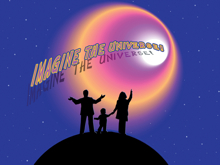Visiting an Afterschool Universe Program Site
What is Afterschool Universe?
Afterschool Universe is an out-of-school-time astronomy program for middle school students. It explores basic astronomy concepts through engaging hands-on activities and takes participants on a journey through the Universe beyond the solar system. You can learn more about the program by visiting the website at https://imagine.gsfc.nasa.gov/educators/programs/au/
There are 12 sessions in this program. An outline of these sessions may be viewed here.
Why am I being asked to visit?
A visit by a scientist or engineer who is knowledgeable about space science is built into the program as a part of the program. This allows the program leader and students to ask you any questions that may have built up over the course of the program. It also provides the students with an opportunity to meet and interact with a scientist or engineer to gain some exposure to careers in a technical field.
This visit takes place towards the end of the program (Session 11) after they have gone through most of the program. The goal of this session is primarily for you to answer the children's questions and to have a lively interaction with them. We suggest you do not use a canned presentation for this experience.
What sorts of questions might they ask me?
The scope of the children's questions can include any relevant topic they may have studied during the program or any questions related to a career in a technical field. If their questions drift towards inappropriate topics, feel free to bring them back to the focus of your visit.
Do I have to talk the entire session?
In order to help interaction during this session, the students will also be working on a "cosmic quilt." This is a project where they articulate the knowledge they have gained on a particular topic during this program and express it both with words (a poem or an essay) and through a drawing or a picture.
If you find that the interactions are stilted or the questions aren't flowing easily, you can mingle with the students as they work on their "quilt pieces" and help them with their effort.
Anything else I should know?
A key point to keep in mind is that we are attempting to not only engage students in science through this program, but also show them how the process of science works. Hence it is perfectly acceptable for you to acknowledge that you don't know the answer if that is the case. Indeed, it presents an opportunity to turn the question into a learning experience for the students — it is important for the students to learn how to determine answers to questions when they simply cannot ask an adult for the answer.



